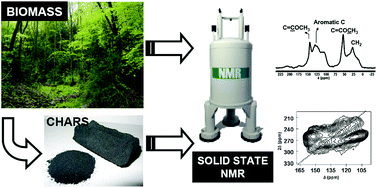Characterization of biomass and its derived char using 13C-solid state nuclear magnetic resonance
Abstract
The role of 13C solid state nuclear magnetic resonance (ssNMR) in the elucidation of the structure of biomass and carbonaceous solids derived from biomass has been crucial since the mid-70s, which gives it a more than 30-year history. As soon as magic angle spinning was coupled to cross-polarization, ssNMR suddenly became of high use to approach structural resolution in cellulose, lignin, coals and various types of carbonaceous materials, up to the more recent hydrothermal carbons (HTC). This review focuses on the specific contribution that ssNMR has made to this field and in particular, the technical advances in the field of ssNMR (advanced pulse sequences for spectral editing, more advanced Magic Angle Spinning probes, high-field spectrometers) will be outlined in terms of their usefulness for the specific purpose of studying the structure of complex biomass (lignin, cellulose) and their char obtained either via a pyrolytic or hydrothermal approach.


 Please wait while we load your content...
Please wait while we load your content...